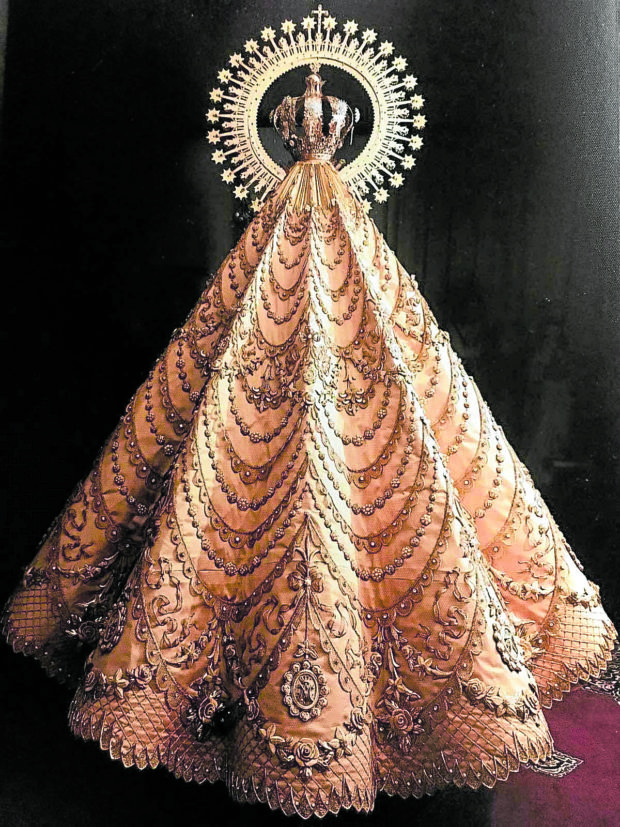Artist Rafael del Casal might be known more for his commissioned portraits of Filipino women in their formal finery. During the second TernoCon held last year, mere weeks before the pandemic enforced lockdowns, an exhibit of his paintings was mounted at the Cultural Center of the Philippines.
His framed subjects in their terno exuded both grace and timelessness—elements that the artist adheres to in his other line of work as a designer of church altars and of vestments worn by different santos (religious statues).
Del Casal grew up around his grandmother, who was a devotee of Our Lady of La Naval in Sto. Domingo Church, Quezon City. The image of Mary carrying the infant Jesus, which dates back to 1593, was originally brought to the country from Acapulco, Mexico, by the Dominicans in 1587.
In 2016, Del Casal was approached to design an elaborate dress for the image. The gala dress gleams with gold thread and is replete with hand-finished embroidery.
“Without the padding, La Naval is life-size at 5’6”. It took me around three months to finalize the design and twice that time for the embroiderers to complete the piece. I was given carte blanche by the priest because they already trusted me,” Del Casal told Lifestyle in a phone interview.

Since the 1980s, he has been designing “on and off” for different parishes and churches. Through these commissioned works, he has managed to build a solid reputation by word of mouth alone.
Anticipated improvements
During the pandemic, Del Casal discovered that churches still wanted to have vestments made for their santos. Until now, church services continue to limit attendance and no Holy Week processions—a Lenten highlight in many towns and cities—were held for the past two years. Despite this, he continues to be contacted for his expertise.
“I think the commissioned work is in anticipation of better times, especially since 2021 marks the 500th anniversary of Christianity in the Philippines. It may also be their way of making an offering—like a prayer for things to get better.”
Designing a church altar and vestments for a santo are two related but different things. The first is extremely technical, and Del Casal drafts everything by hand. He makes scale drawings of the floor plan, the niches or pedestals for the featured saints, and factors in elevations like the steps leading to the altar. For this, he relies on his favorite and very trusty scale ruler and compass.
“I don’t know how to use CADD (computer-aided design and drafting),” he admitted. He then turns over his designs to somebody who can plot them out on a computer.
Designing a vestment is a little more relaxed; he only requires paper, his pencils and some background on the saint he is designing for. The artist researches on each santo, but generally dresses male saints in vestments featuring leaves and foliage, while female saints are covered in floral designs from their necks down to the hems of their vestments.
“These vestments are very expensive. They’re made using gold thread imported from Spain. When I create something, I want it to be a heritage piece,” Del Casal said.
His design for La Naval de Manila with its heavy gold embroidery is now one of the image’s most iconic. INQ

